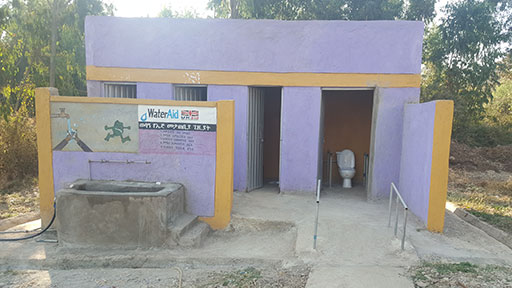Self-Assessment Questions (SAQs) for Study Session 4
Now that you have completed this study session, you can assess how well you have achieved its Learning Outcomes by answering these questions.
SAQ 4.1 (tests Learning Outcomes 4.1 and 4.3)
- a.What is the objective of an accessibility and safety audit?
- b.Why is it described as a participatory process?
- c.Outline the steps in conducting an accessibility and safety audit.
Answer
- a.The objective of an accessibility and safety audit is to identify barriers to accessibility to a facility and anything that may make people feel unsafe when using it. The audit is followed by plans and actions that modify the facility so that it is accessible to persons with disabilities and others who have difficulty because of their age or condition.
- b.The audit is a participatory process because it involves, or should involve, the participation of all types of people from the community, including persons with disabilities, other men and women of all ages, children, etc.
- c.There are five suggested steps to be followed for an accessibility and safety audit: (i) preparation (select facility, form audit team), (ii) assess the path to the facility, (iii) assess the facility, (iv) analyse problems and (v) make changes or develop solutions.
SAQ 4.2 (tests Learning Outcome 4.2)
Imagine you are a part of a team that helps communities and institutions conduct accessibility and safety audits and gives advice on possible actions to take.
- a.The 90-year old grandfather in a family is frail and has lost his sight. The family is planning a new latrine. What features do you advise them to include in the new facility?
- b.A health centre plans to modify its sanitation facilities. What is your general advice to make a health institution sanitation facility inclusive?
Answer
- a.They should dig the new latrine no more than 15 metres from the house and construct a smooth, even path to it. It should have markers along the sides of the path or a guide rope stretched from the house to the latrine. The latrine should have a permanent or moveable seat, and handrails. They should also consider handwashing facilities next to the latrine.
- b.The health centre team would need to consider all features of inclusive institutional sanitation: an even path to the latrine block, a wide ramp on the entrance, enough space inside, levelled floors, at least one permanent seat, handrails, doors, and handwashing facilities. They should also consider separate facilities for men and women and appropriate arrangements for menstrual hygiene management for female patients and staff.
SAQ 4.3 (tests Learning Outcome 4.2)
Look at the latrine block in Figure 4.8. What features of this facility make it inclusive? Are there any features that are not inclusive?

Answer
Inclusive features:
- There is a smooth ramp into the latrine block which also has handrails on both sides of the slope.
- The cubicle on the right has a door that is wider than standard width. It also has handrails inside the cubicle and a raised seat.
Unfortunately, there are also features that make the facility less accessible:
- The cubicle door opens inwards so it would be impossible for a wheelchair user to get into the cubicle and close the door behind them.
- There are steps between the latrines and the water taps on the left so it would not be possible for wheelchair users and some others to wash their hands after using the latrine.
SAQ 4.4 (tests Learning Outcome 4.4)
- a.Imagine you are an advocate for inclusive planning and you got a chance to meet with the water and health planning office. What would you like to discuss at the meeting?
- b.Imagine you are a procurement head and it is your responsibility to review the contract documents for a new facility before they are signed. Outline what you should check while reviewing the contract.
Answer
- a.There are many topics you might like to discuss including the design and construction guidelines for inclusive WASH in schools and health institutions; the low level of awareness about inclusion; the need to consult with users; and the fear of increased costs for design modifications. You could describe how costs can be minimised if accessible features are incorporated from the start of the design and construction process.
- b.As a reviewer, you would check that the contract document specified any inclusive features that had been identified and agreed and also that the contract had sufficient detail to ensure they were constructed correctly. The contractors will be monitored for compliance against these specifications during and after construction, so you would need to check that the requirements were clearly stated.
Summary of Study Session 4
